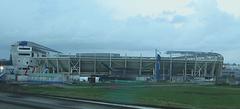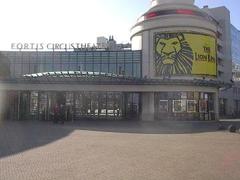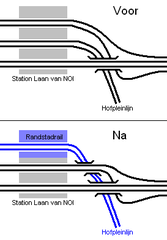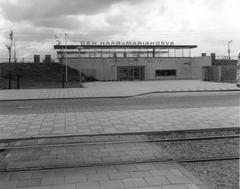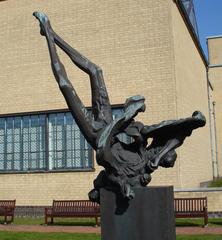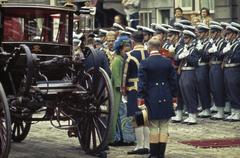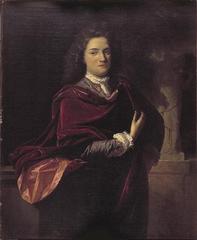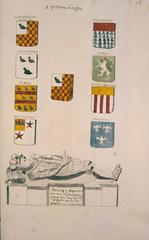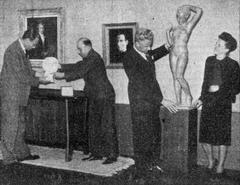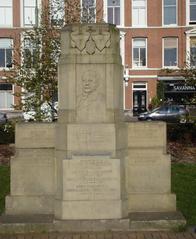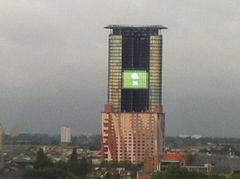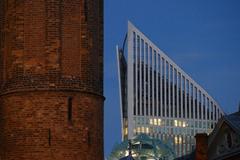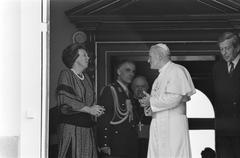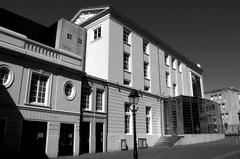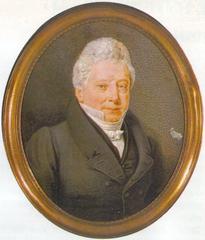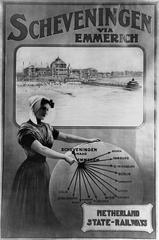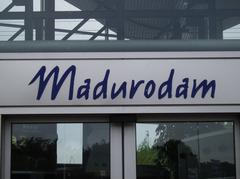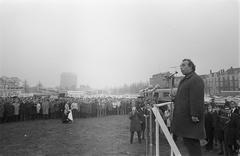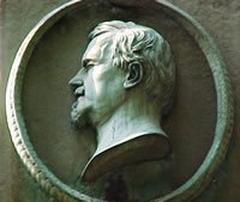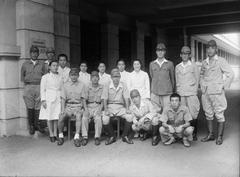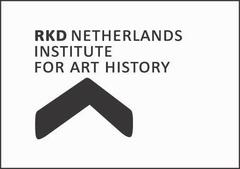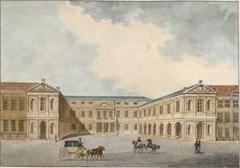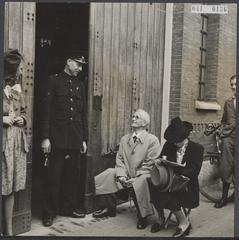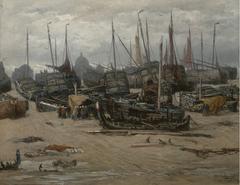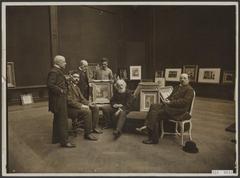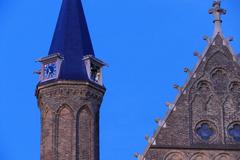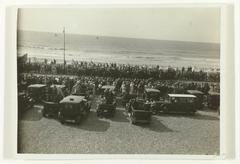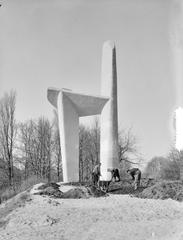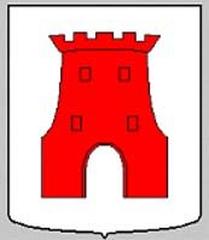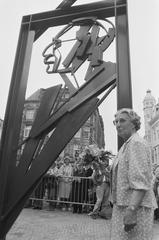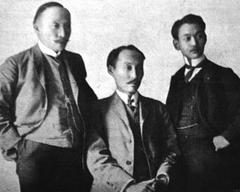
The House of Lords, The Hague: Visiting Hours, Tickets, and Historical Significance
Date: 04/07/2025
Introduction: The House of Lords and Its Place in Dutch Democracy
The House of Lords (Eerste Kamer) in The Hague opens a window into centuries of Dutch governance, law, and political tradition. Located within the iconic Binnenhof complex—one of the world’s oldest parliamentary sites still in use—the House of Lords is a living symbol of the Netherlands’ constitutional evolution. The Binnenhof, with its medieval roots and architectural grandeur, provides a remarkable backdrop for anyone intrigued by European political history and heritage. Visitors not only uncover the legislative workings of the Dutch Senate but also witness the broader cultural significance of The Hague as an international city of peace and justice.
Due to ongoing renovations at the Binnenhof (scheduled through 2028), the Senate is currently housed in nearby buildings, yet guided tours continue to offer immersive experiences. These tours, available in English, provide insights into the Senate’s legislative role and the traditions that have shaped Dutch democracy. The Hague’s reputation is further enriched by institutions such as the Peace Palace and International Criminal Court, making it a must-visit for those interested in governance, law, and history.
This guide delivers everything you need to know for your visit: opening hours, ticketing, accessibility, guided tours, nearby attractions, and practical travel tips. For official ticketing and tour information, refer to ProDemos, Den Haag tourism, and Living Nomads.
Table of Contents
- Introduction and Historical Overview
- The Binnenhof: Medieval Origins and Architectural Highlights
- Visiting the House of Lords: Hours, Tickets, and Tours
- The Hague as a National and International Center
- Practical Information: Accessibility, Transport, and Nearby Attractions
- Frequently Asked Questions (FAQ)
- Conclusion and Final Tips
- References and Further Resources
The Binnenhof: Medieval Origins and Architectural Marvel
Historical Background
The Hague (Den Haag) stands out among European cities for its open, unwalled medieval development. Its recorded history begins in the 13th century as “Die Haghe,” centering around the Binnenhof, which was constructed from 1250 onwards as a residence for the Counts of Holland. The Ridderzaal (Hall of Knights) and Grafelijke Zalen (Earl Halls) became the heart of political power, reflecting the city’s evolution as a governance center (denhaag.nl, visitingthedutchcountryside.com).
Architectural Highlights
The Binnenhof complex features a blend of medieval and neogothic elements. The Ridderzaal, completed around 1280, is renowned for its 18-meter-high timber roof, reminiscent of an inverted ship’s hull—a tribute to the Netherlands’ maritime heritage (Architecture Helper). The complex also includes the Torentje (the Prime Minister’s office), the Hofvijver pond, and interconnected parliamentary chambers (My Europe Days). Artistic elements, such as stained glass windows and heraldic crests, further enrich the site’s historical and cultural value.
Visiting the House of Lords: Hours, Tickets, and Tours
Current Location and Tour Information
Due to renovations at the Binnenhof, the House of Lords (Eerste Kamer) is temporarily relocated but remains accessible via guided tours (ProDemos).
- Visiting Hours: Tours generally run from 9:00 AM to 5:00 PM, subject to parliamentary schedules. Always check the official ProDemos website for the latest details.
- Tickets: Advance booking is mandatory. Secure tickets online through ProDemos. For English-language tours, email [email protected] to confirm availability.
- Identification: Valid ID (passport, EU ID card, or EU driver’s license) is required for entry.
Guided Tour Experience
Guided tours last 60–90 minutes and are led by expert guides who detail the history, architecture, and modern functions of the Dutch Parliament. Visitors can ask questions and gain insights into both the temporary Senate chamber and Dutch democratic traditions. English tours are available by request.
Accessibility and Visitor Facilities
The temporary parliamentary buildings are mostly accessible. Notify ProDemos ahead if you require special accommodations. Restrooms and cloakrooms are available, though photography inside chambers is generally restricted.
The Hague: National Governance and International Justice
Administrative and Royal Center
The Hague has served as the administrative heart of Dutch governance since the medieval period, even though Amsterdam is the constitutional capital. The Binnenhof houses both chambers of parliament and the Prime Minister’s office, with other notable institutions such as the Supreme Court and Council of State nearby. The working palace of the Dutch royal family, Noordeinde Palace, is also located in the city (denhaag.nl).
International City of Peace and Justice
The Hague’s global stature is defined by institutions like the Peace Palace (International Court of Justice, Permanent Court of Arbitration), the International Criminal Court, and the Organisation for the Prohibition of Chemical Weapons (thecrazytourist.com). The city also regularly hosts high-profile summits, such as the 2025 NATO Summit (en.wikipedia.org).
Practical Information for Visitors
Getting There and Transport
The Hague is easily reached by train from Amsterdam Schiphol Airport (about 40 minutes) and Rotterdam The Hague Airport. The city’s public transport network—trams, buses, and bikes—makes getting around efficient and convenient.
Nearby Attractions
- Mauritshuis Museum: Home to Dutch Golden Age masterpieces, including Vermeer’s “Girl with a Pearl Earring.”
- Peace Palace: Offers guided tours (check peacepalace.org for details).
- Scheveningen Beach: Accessible by tram for a seaside escape.
- Historic Squares: The Plein and Buitenhof are filled with cafes and restaurants (Nomadic Matt).
Dining and Accommodation
The city center offers diverse dining, from casual cafes to Michelin-starred restaurants. Accommodation options range from boutique hotels to international chains, all within walking distance of key sights.
Accessibility
Most major sites, including temporary parliamentary buildings, are wheelchair accessible. Always check accessibility details when booking.
Frequently Asked Questions (FAQ)
Q: What are the visiting hours for the House of Lords?
A: Tours typically run between 9:00 AM and 5:00 PM. Check the ProDemos website for current times.
Q: How do I book tickets?
A: Reserve tickets online through ProDemos. For English tours, contact [email protected].
Q: Is the House of Lords accessible for wheelchair users?
A: Yes, but notify ProDemos in advance for specific accommodations.
Q: Can I take photos inside the House of Lords?
A: Photography is generally restricted in chambers; ask your guide for permission.
Q: What are some must-see nearby attractions?
A: The Ridderzaal, Mauritshuis Museum, Peace Palace, and Scheveningen Beach.
Conclusion and Final Tips
A visit to the House of Lords in The Hague is a journey through the heart of Dutch democracy and European political heritage. Whether you are a history enthusiast, architecture lover, or political aficionado, the experience is both educational and inspiring. Remember to book tickets in advance, check accessibility, and plan your visit around parliamentary sessions for the best experience. Enhance your stay with virtual tours and audio guides, and explore The Hague’s rich tapestry of cultural and historic sites.
For the latest updates and official visitor information, consult the ProDemos official site, Den Haag tourism, and Living Nomads.
References and Further Reading
- This is a sample text. (denhaag.nl)
- This is a sample text. (visitingthedutchcountryside.com)
- This is a sample text. (livingnomads.com)
- This is a sample text. (denhaag.com)
- This is a sample text. (prodemos.nl)
- This is a sample text. (wikipedia.org)
- This is a sample text. (architecturehelper.com)
- This is a sample text. (thecrazytourist.com)

